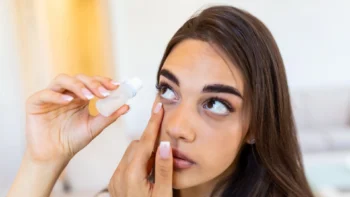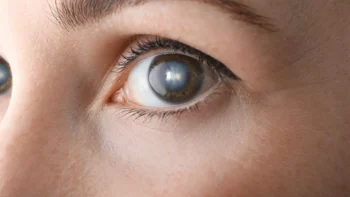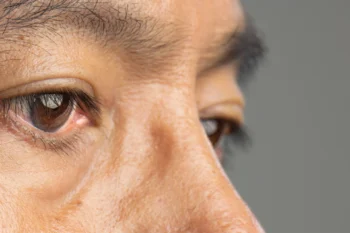If you’ve had relatively good eyesight throughout your life, you might not give much thought to the health of your eyes. But as you age, you might notice that your eyes start to change. From a gradual decline in your eyesight over time to more serious ocular diseases, these changes can seriously impact your life.
Adults aged 40 and older are at the greatest risk for eye diseases like cataracts, diabetic retinopathy, glaucoma, and macular degeneration. While these diseases are treatable, in severe cases they can affect the way you see — and even cause blindness. With rapidly increasing rates of vision impairment across the United States, you might be wondering: Can you prevent vision loss?
The good news is that you can take preventative measures to protect your eyesight in the long run.
In this guide, we’ll walk you through some of the ways you can prevent vision problems later in life, as well as some of the treatment options you can seek with a Las Vegas eye doctor.
Proactive Ways to Prevent Vision Loss
Preventative care is the first line of defense against vision loss and other eye problems. Being proactive about your ocular health will help prevent these issues from emerging in the first place. Remember: it’s always better to be proactive in preventing problems than it is to treat them.
Here are a few simple lifestyle changes you can adopt to better protect your eyes.
1. Eat the Right Foods
You already know that the right diet can impact your health, but did you know that this applies to your eyesight too?
Studies show that green leafy vegetables — which contain the nutrients lutein and zeaxanthin — are proven to help reduce the risk for eye disease. Vitamin A, which can be found in vegetables like carrots and sweet potatoes, can also boost your eye health.
You can also add more fruit to your diet to boost vitamin C and antioxidant levels. Try salmon or other cold-water fish to boost your omega-3s and help with dry or irritated eyes.
2. Exercise regularly
A 2017 study found that people who engage in moderate physical activity regularly have a much lower risk of developing glaucoma — 73%, to be exact. Exercise can reduce blood pressure — as well as pressure in the eyes — which can lower your risk for glaucoma.
3. Protect your eyes from the sun
Just like you wear sunscreen to protect your skin, you also need to protect your eyes from damaging rays. The skin around your eyes is extremely thin, making it vulnerable to UV radiation. Sun damage and skin cancers can damage your eye structure.
To protect your eyes from the sun, wear sunscreen and sunglasses with UVA/UVB protection.
4. Cut your smoking habit
Smoking isn’t just bad for your lungs — it can raise your risk of developing macular degeneration, a condition that affects vision in the center of your eye. The tar in cigarette smoke can trigger the formation of deposits and the thickening of the retina, which can contribute to macular degeneration.
Smoking also puts you at a higher risk of developing cataracts and dry eyes.
5. Get comprehensive eye exams
About half of all visual impairment and blindness can be prevented through early diagnosis and treatment.
Getting regular checkups is a great way to ensure that you catch all vision problems early. This also gives you more opportunities to treat an issue effectively. In addition to regular examinations, see a doctor right away if you notice any changes to your eyesight.
Vision Impairment: What You Need to Know
Vision impairment is one of the most common disabilities in adults. According to the CDC, approximately 12 million people over the age of 40 have some form of visual impairment, including blindness.
There are many reasons behind visual impairment, including medical conditions, injuries, and aging.
Here are some of the most common types of visual problems:
- Blurred vision (refractive errors). Most commonly known as nearsightedness and farsightedness, blurred vision can be corrected by eyeglasses, contacts, and surgery.
- Age-related macular degeneration (AMD). AMD is a disease that blurs your central vision. It progresses slowly, however, and can be treated before developing to an advanced stage.
- Glaucoma. Glaucoma is caused by an increase in fluid pressure inside your eyes. It can lead to slowly developing vision loss.
- Cataracts. While cataracts cloud the lens of the eye, leading to blurry vision and low night vision, they can be successfully treated with surgery.
- Diabetic retinopathy. Anyone with type 1 or type 2 diabetes is at risk for diabetic retinopathy, which can lead to blurred vision and gradual loss of eyesight.
You might experience vision impairment differently than someone else would — the signs can vary from person to person. There are different degrees of vision loss, including:
- Loss of peripheral vision
- Blurry or hazy vision
- Seeing spots
- Night blindness
- Complete vision loss.
Treatment Options for Vision Loss
Whether or not you’ve noticed symptoms of vision loss, an ophthalmologist or other eye specialist can diagnose the underlying cause during an eye exam. Using various tests, they may examine the cornea, retina, optic nerve, and pressure levels inside the eye. Your doctor may also ask you about your medical history and your family’s medical history to make a final determination.
Once you have a diagnosis, there are various treatment options available to correct vision or prevent further damage to your eyesight.
Age-related macular degeneration (AMD)
There’s no cure for macular degeneration, but some steps can be taken to prevent severe vision loss. These treatment options include:
- Injections into the eye
- Laser therapy
- Photodynamic therapy
- Low-vision aids
- Vitamins including C, E, beta-carotene, and zinc
Glaucoma
The primary treatment for glaucoma is a series of eye drops over time to relieve pressure in the eye. While there is surgery available to help keep the disease under control, it’s typically used as an alternative to eye drops instead of the first line of treatment.
Cataracts
Modern technology makes cataract treatment relatively simple. Cataract surgery involves removing the clouded lens and replacing it with a clear artificial lens, which can remain permanently in the eye. A small incision is made in the eye and the entire procedure takes less than 30 minutes.
Diabetic retinopathy
Early treatment for diabetes-related vision loss can include improving diabetes management. When the disease is still in its early stages, closely controlling your blood sugar can slow the progression.
For advanced diabetic retinopathy, there are some treatment options available:
- Injections in the eye
- Photocoagulation or pan-retinal photocoagulation (laser treatment)
- Vitrectomy (removing blood from the eye using a small incision)
See a Las Vegas Eye Doctor to Prevent Vision Loss
Your eyes will change over the years, but that doesn’t mean there’s nothing you can do about it. Knowing how to take care of your eyes is the first step toward protecting your vision for a lifetime.
To stay on top of your health and catch potential problems early, it’s more important than ever to get regular examinations. At Brimhall Eye Center, we have effective solutions for anything including refractive errors, cataracts, and diabetic retinopathy. Learn more about our services or contact us today to find the best treatment option for you.





